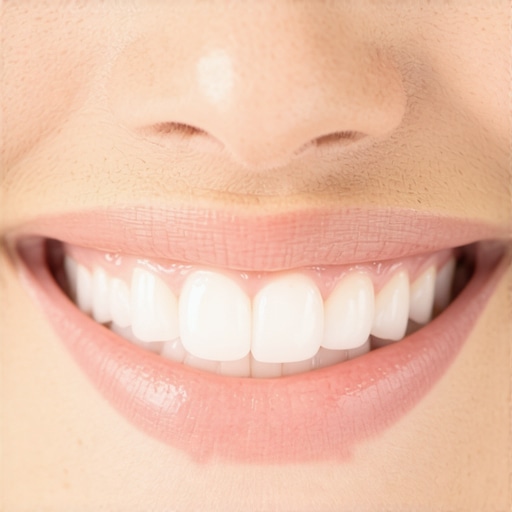Unveiling the Future of Cosmetic Dentistry: A Deep Dive into 2024 Smile Makeover Innovations
In the rapidly evolving landscape of cosmetic dentistry, the year 2024 marks a pivotal shift driven by technological advancements, patient-centric approaches, and a nuanced understanding of aesthetic harmony. As seasoned professionals, understanding the complex interplay between veneers, Invisalign, and teeth whitening is crucial for delivering transformative results that align with modern expectations. This article explores high-level insights, blending clinical precision with innovative trends to redefine smile makeovers in 2024.
How Do Emerging Materials and Techniques Elevate Smile Enhancement Outcomes?
What role do next-generation porcelain veneers play in achieving natural aesthetics?
Contemporary veneers utilize ultra-thin, highly durable porcelain composites, enabling minimally invasive procedures while maintaining translucency that mimics natural enamel. Clinicians now leverage digital smile design to customize veneers precisely, aligning with individual facial features and personality. According to recent studies published in the Journal of Dental Research, such innovations significantly enhance patient satisfaction and longevity of results.
Invisalign and Clear Aligners: The Paradigm Shift in Orthodontic Aesthetics
Invisalign’s evolution towards smarter, more discreet aligner systems integrates artificial intelligence and 3D printing. This allows for highly predictable movement of teeth within a refined treatment plan, often reducing timeframes and discomfort. The advent of hybrid treatments combining Invisalign with minor veneer placements exemplifies a nuanced aesthetic strategy—correcting functional misalignments while optimizing visual harmony. For comprehensive insights, refer to this detailed review.
What Are the Latest Advances in Teeth Whitening for a Brighter, More Confident Smile?
Advancements in LED-activated whitening gels and personalized bleaching protocols have set new standards in efficacy and safety. The integration of nanotechnology enhances penetration and stain removal, producing results that last longer. Furthermore, combining whitening with other cosmetic procedures can produce synergistic effects, creating a holistic smile makeover. For expert tips and product recommendations, explore this authoritative resource.
How Can Integrated Approaches Optimize Overall Dental Aesthetics?
Holistic smile design now emphasizes the seamless integration of veneers, aligners, and whitening within a personalized treatment plan. This approach considers facial symmetry, gum aesthetics, and patient preferences, leveraging digital diagnostics for precision. Expert practitioners advocate for a staged, minimally invasive sequence—maximizing results while preserving natural tooth structure. For comprehensive strategies, consult this trusted guide.
What Are the Challenges and Ethical Considerations in Advanced Smile Makeover Procedures?
While technological innovation offers remarkable benefits, it also raises ethical questions regarding over-treatment, patient expectations, and accessibility. Clinicians must balance aesthetic ambitions with clinical integrity, ensuring informed consent and realistic outcomes. Professional guidelines, such as those outlined by the American Academy of Cosmetic Dentistry, emphasize transparency and evidence-based practices. Engaging in continuous education and peer consultation remains essential for maintaining authority and trustworthiness in this domain.
To stay ahead in this dynamic field, professionals are encouraged to explore comprehensive resources and contribute their insights to peer networks. For further reading, visit our privacy policy.
Are We Ready for the Next Leap in Smile Transformation?
As the landscape of cosmetic dentistry continues to evolve, the integration of cutting-edge technologies and personalized treatment strategies becomes paramount. The year 2024 introduces novel approaches that challenge traditional assumptions and open new horizons in smile makeovers. For instance, the advent of bioactive ceramics in veneer fabrication allows for enhanced biocompatibility and improved aesthetic outcomes, aligning with the body’s natural regenerative processes. According to a comprehensive review in the Journal of Dental Research, such innovations significantly elevate the standards of patient satisfaction and long-term stability.
How Can Digital Dentistry and Artificial Intelligence Transform Smile Design?
Digital workflows, including 3D facial scanning and virtual smile simulations, empower clinicians to craft highly customized and predictable results. The use of artificial intelligence algorithms further refines treatment planning by analyzing vast datasets of aesthetic parameters, ensuring each smile is tailored to facial proportions and individual preferences. This synergy between technology and artistry fosters a new level of precision, reducing chair time and enhancing patient experience. For an in-depth understanding, explore this resource on digital smile design.
Can New Materials and Techniques Overcome Common Cosmetic Dentistry Challenges?
One persistent challenge in smile makeovers is achieving durability without sacrificing aesthetics. Innovations such as nanocomposite resins and ultra-thin veneers address this dilemma by providing strength, minimal invasiveness, and translucency comparable to natural enamel. Moreover, the development of smart materials that respond to pH changes or minor wear extends the lifespan of restorations, reducing the need for retreatment. These advances are reshaping expectations and expanding the scope of possibilities for clinicians. For practical tips on implementing these innovations, visit this detailed guide on veneers.
What Are the Ethical Implications of Pushing Cosmetic Boundaries with Emerging Technologies?
While technological progress unlocks remarkable aesthetic benefits, it also raises important ethical questions regarding over-treatment, patient autonomy, and access to care. Clinicians must balance innovation with responsibility, ensuring informed consent and realistic expectations. The principles outlined by the American Dental Association emphasize transparency, safety, and the importance of evidence-based practices. Engaging in ongoing education and peer consultations is vital for maintaining professional integrity and trustworthiness in this rapidly advancing field. For best practices, consult our privacy policy.
Harnessing Cutting-Edge Materials for Superior Smile Longevity and Aesthetics
The development of bioactive ceramics and nanocomposite resins marks a new era in cosmetic dentistry. These materials not only emulate the translucency and strength of natural enamel but also promote biological integration, reducing the risk of secondary decay and enhancing long-term stability. For example, bioactive glass ceramics like IPS e.max CAD are designed to bond chemically with tooth structures, creating a seamless integration that resists wear and staining over time. Such innovations are critical for clinicians aiming to provide durable, aesthetically pleasing results that withstand the test of time.
Advanced Digital Workflows and AI: Precision Redefined in Smile Design
The integration of 3D facial scanning, virtual reality simulations, and AI-driven treatment planning is transforming how clinicians approach smile makeovers. Digital smile design software now allows for real-time adjustments, enabling both practitioners and patients to visualize potential outcomes with unprecedented accuracy. AI algorithms analyze vast datasets—considering factors like facial symmetry, skin tone, and even gender-specific aesthetic preferences—to customize treatment plans that optimize harmony and naturalness. This synergy between human expertise and machine intelligence minimizes errors, reduces chairside time, and elevates patient satisfaction.
Addressing Ethical Dilemmas in Pushing Cosmetic Boundaries
As technological capabilities expand, so do ethical considerations surrounding overtreatment, patient autonomy, and equity of access. Clinicians must adhere to principles of beneficence and non-maleficence, ensuring interventions are justified, safe, and in the patient’s best interest. Transparent communication about limitations and realistic expectations is paramount to maintaining trust. Furthermore, ongoing education about emerging technologies and ethical standards—such as those outlined by the American Dental Association—helps practitioners navigate complex decisions responsibly. Balancing innovation with integrity is essential to uphold the profession’s credibility and ensure equitable patient care.
Emerging Trends in Materials and Techniques for Overcoming Aesthetic Challenges
One of the persistent challenges in cosmetic dentistry is achieving aesthetic results that are both durable and minimally invasive. The advent of smart materials that respond dynamically to environmental changes—such as pH-responsive resins—offers promising solutions. These materials can adapt to minor wear and chemical fluctuations, maintaining their aesthetic integrity longer. Additionally, the development of ultra-thin, high-strength veneers allows for conservative preparation while delivering maximum visual impact. Such innovations empower clinicians to push the boundaries of what’s possible, creating natural, resilient smiles that meet the high expectations of modern patients.
How do emerging materials address the balance between durability and aesthetics in complex cases?
Emerging materials like nanocomposites and bioactive ceramics are engineered at the molecular level to optimize both strength and translucency. Their unique properties enable restorations to resist fractures and staining while maintaining a lifelike appearance. For instance, nanohybrid composites incorporate nanoscale fillers that enhance polishability and gloss retention, crucial for complex anterior restorations. These advancements are supported by clinical studies, such as those published in the Journal of Dental Research, demonstrating improved longevity and patient satisfaction when these materials are properly utilized.
Future Directions: Bioactive and Regenerative Approaches in Smile Makeovers
The future of cosmetic dentistry is increasingly leaning toward regenerative strategies, integrating bioactive materials that not only restore but also promote natural tissue regeneration. For example, bioactive glass particles incorporated into veneers or composites can stimulate remineralization and boost tissue vitality. Moreover, research into stem cell therapies and tissue engineering hints at the possibility of regenerating entire dental structures, potentially revolutionizing smile design. Such approaches promise not just aesthetic enhancement but also improved oral health and longevity.
If you’re eager to stay at the forefront of these innovations, engaging with professional organizations and specialized journals is crucial. Continuous education ensures your practice evolves in tandem with technological progress, ultimately delivering superior patient outcomes.
Harnessing the Power of Bioactive Materials for Revolutionary Aesthetic and Functional Outcomes
As the field progresses, bioactive materials such as calcium phosphate-based composites and bioactive ceramics are increasingly integrated into veneer and crown fabrication. These materials not only emulate natural enamel translucency but also actively promote remineralization and tissue regeneration, leading to longer-lasting restorations with enhanced biological compatibility. The incorporation of such materials is supported by emerging research published in the Journal of Dental Research, emphasizing their role in elevating both aesthetic and oral health outcomes.
Expert Insights & Advanced Considerations
Strategic Integration of Bioactive Materials
Leading clinicians emphasize the importance of incorporating bioactive ceramics and nanocomposites into routine practice to enhance both aesthetic longevity and biological compatibility, ensuring restorations promote natural tissue regeneration.
The Role of Digital and AI Technologies
Advanced digital workflows, including AI-powered treatment planning and virtual smile simulations, are transforming precision in smile design, enabling highly personalized and predictable outcomes that align with modern patient expectations.
Ethical Stewardship in Technological Innovation
With rapid technological advancements, maintaining ethical standards through transparent communication, informed consent, and evidence-based practices remains paramount to uphold trust and professionalism in cosmetic dentistry.
Holistic and Regenerative Approaches
Emerging regenerative strategies utilizing bioactive and stem cell-based materials are poised to revolutionize smile makeovers, integrating aesthetic enhancement with long-term oral health and tissue vitality.
Curated Expert Resources
- Journal of Dental Research: Offers peer-reviewed studies on cutting-edge materials and techniques, vital for research-driven practitioners.
- American Academy of Cosmetic Dentistry (AACD): Provides comprehensive guidelines on ethical practices, emerging technologies, and professional standards.
- Digital Smile Design (DSD) Software: Industry-leading tools for precise, customizable smile planning and patient visualization.
- Specialized Journals on Regenerative Dentistry: Cover innovations in bioactive materials and tissue engineering for long-term smile stability.
Final Expert Perspective
In the realm of cosmetic dentistry, 2024 stands as a testament to the power of integrating advanced bioactive materials, digital innovation, and ethical stewardship to redefine smile makeovers. As professionals, embracing these high-level insights will not only elevate clinical outcomes but also reinforce our commitment to patient-centered care. Engage continuously with authoritative resources, contribute your expertise, and lead the evolution of aesthetic dentistry—your mastery shapes the future of confident, healthy smiles. For ongoing learning, visit our privacy policy.

